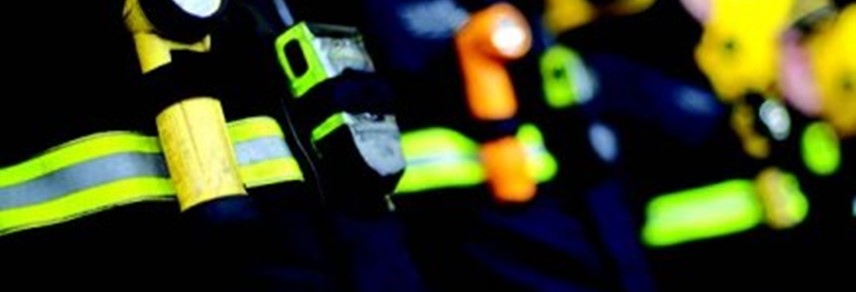
SOCIAL BEHAVIOUR
Public organisations like TfL, London Fire Brigade and the nation’s police departments manage crisis and mitigate risk everyday both in practice and on social media. They handle tough subjects like fires, crime and health and safety with humour, frankness and speed. Why do they take the risk of being transparent on social media?
Social behaviour
Public organisations like TfL, London Fire Brigade and the nation’s police departments manage crisis and mitigate risk everyday both in practice and on social media. They handle tough subjects like fires, crime and health and safety with humour, frankness and speed. Why do they take the risk of being transparent on social media?
|
Glenn Sebright head of media and internal communications, London Fire Brigade London Fire Brigade was on standby to deal with anything that threatened to interrupt the London 2012 Olympic and Paralympic Games. After years of responding to prophets of doom that the capital would grind to a halt under unprecedented levels of security, things were going brilliantly and London was full of Team GB spirit. That didn’t stop London Fire Brigade remaining fully prepared, and on 8 August at just after 7 p.m. reports came in of an explosion at King’s Cross. Pictures of flames bursting from a building appeared almost immediately on Twitter. The press team at London Fire Brigade was ready. Equipped with the facts @LondonFire tweeted “if you heard a bang in Kings Cross it was due to gas cylinders exploding before we arrived at a BBQ fire”. Interest dropped and the London Games went on to be the safest Olympics ever. It’s a classic example of how emergency services can join and influence conversations at the peak of an incident to spread accurate and reassuring information quickly. But there’s more.
We prevent fires, as well as put them out. If you use social media to help do that, you have to be realistic and get the tone right. If we can get four million Facebook users to turn their hair straighteners off or make people think twice about becoming trapped in embarrassing positions, we’ll take that opportunity. |
Stuart Ross, director of news, Transport for London It’s vital that we keep pace with our customers expectations. Social media is key to the way we communicate and engage with our customers today. It enables us to share the vital information they need to get around the capital quickly and easily and they increasingly want that on the move.
We use social media to provide up to the minute travel information, answer customer queries and deal with their complaints. We have 24 Twitter feeds for travel information and customer enquiries covering all of our services including each Tube line, Barclays Cycle Hire, road traffic and Oyster. We also use our social media channels, including our corporate Twitter account – @TfLOfficial – Facebook, YouTube and Pinterest for the provision of news, information and to enhance the appeal and effectiveness of campaigns, such as road safety. It’s all about using the best platforms that target the audiences we are trying to reach. For example, with our Teen Road Safety campaign, we worked with high-profile peer influencers such as Tinie Tempah to record video shout outs to remind teenagers to take care on the roads. Shared on social media channels by teens themselves, this peer-to-peer communication is much more powerful than any message or lecture from TfL. Stuart Bruce, independent public relatiosn consultant and trainerIf information is power, then it is essential that you are always as fully informed as possible. That’s why it is important for critical public services to know and understand what is being said on social media and social networks. However, online isn’t always the best way to act on what you find. Sometimes monitoring the social web will provide critical intelligence that helps inform a better on the ground response. Often the best response is to approach individuals offline in order to calm a situation before it escalates. More frequently social can be used to communicate public information and warnings. Both of these can help avoid turning an issue into a crisis. |
Amanda Coleman, head of corporate communications, Greater Manchester Police Many years ago if a crisis happened then the emergency services had a tried and tested plan of how to manage communication. It was all focused on controlling the release of information and making sure the police, fire or other agency was seen to be in charge. In 2013, this is no longer the case and recent events have shown that the impact of social media has required a fundamental change in the way events are handled. When two Greater Manchester Police officers were murdered in 2012, it broke first on social media. Local people were tweeting and updating Facebook about police activity and what they were seeing. This was well before the media ever made a phone call demanding more information. This means that communication teams have to be using social media on a daily basis, monitoring it and having conversations with followers. It isn’t enough to wait for the crisis the investment has to take place beforehand. Then when some crisis or significant emergency occurs the team is in the right place to be able to advise decision makers. The riots in 2011 really highlighted to GMP that social media was, and would continue to be, at the heart of any crisis. It is on social media that the crisis will break and it can be where the silent majority get a chance to air their views. Now is the time for people to invest in understanding social media, having a team that are using it on
a daily basis, be able to access the right technology to make things happen. Above all don’t wait until the streets are on fire to try and understand and develop social media, do it when you have time. |



